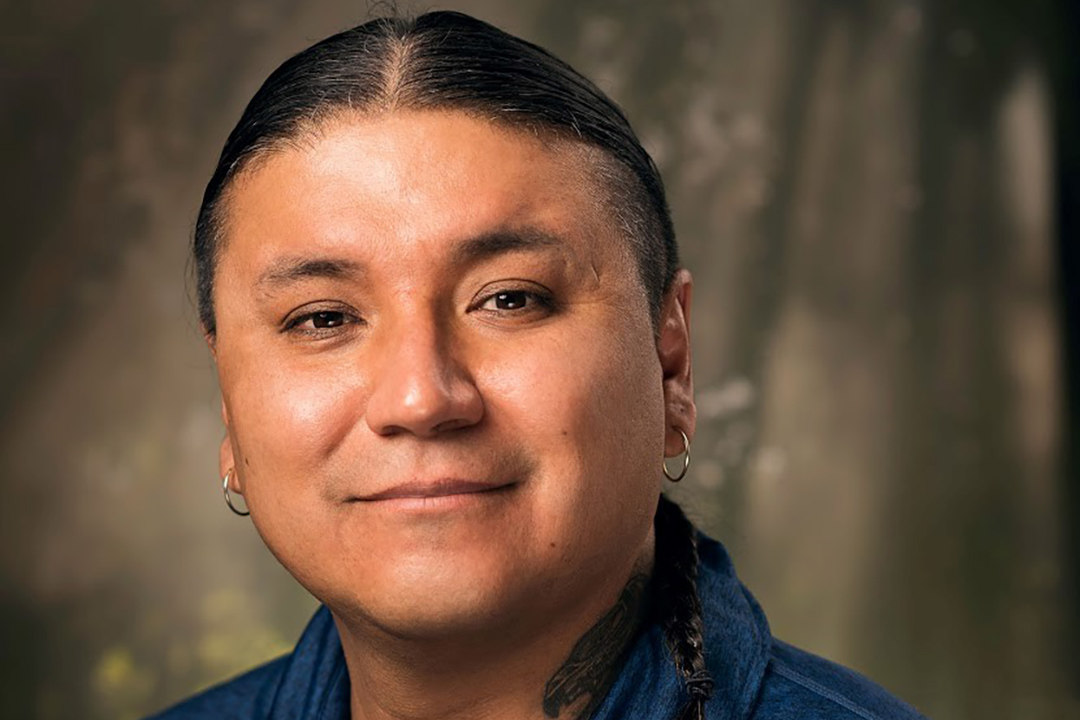
Preserving and promoting Indigenous languages
Of the more than 60 Indigenous languages in Canada today, only three are projected to still be spoken 25 years from now.
By James ShewagaAt the University of Saskatchewan (USask), professors like Randy Morin are determined to change that. Morin is one of a small group of language experts working to ensure Indigenous languages not only survive, but thrive.
“There are around 63 Indigenous languages, but we know for sure that three went to sleep. We don’t call them extinct, we call them going to sleep,” said Morin, who teaches Cree classes and is a faculty member in the Department of Indigenous Studies in the College of Arts and Science. “Only Cree, Inuktituk and Ojibwa are expected to survive. We need to preserve our languages, protect the culture, the traditional ways of knowing. We lose so much when we lose the language.”
As the nation recognizes National Indigenous History Month in June and National Indigenous Peoples Day on June 21, Morin would like to see more resources committed across the country to preserving the traditional languages of the land.
“Prior to treaty, this whole area, all the treaty territories, were home to many nations that spoke their language,” said Morin, who holds bachelor’s and master’s degrees in education. “The language is intimately tied to the land, to the fauna, to the animals, to the natural world, to the weather. The language is Indigenous to this land. There is a lot of science coming out now, saying that the fate of the world lies with Indigenous knowledge.
“We’re facing a global crisis in terms of climate change and the world’s last remaining most biodiverse regions are located on Indigenous lands. If we lose the language, we lose the medicines and the teachings, and traditional ecological knowledge dies. So, it’s imperative that we revitalize Indigenous languages.”
Currently, USask offers courses in Cree and Michif, but Morin said more is required to preserve thousands of years of history and heritage.
“Absolutely, the University of Saskatchewan has taken steps forward and it started off with the College of Education with Kevin Lewis, he created a Cree certificate, and that was a big thing to come out of the university,” Morin said. “But we also need Saulteaux teachers, we need Ojibway teachers, we need Dene teachers, and we need Blackfoot and Dakota, Nakota, Lakota teachers.”
Professors like Morin and Lewis, along with Elder Norman Fleury—a leader in Michif language revitalization—are three of the language leaders on campus. Morin also credits Joan Greyeyes—former director of First Nations and Métis relations at USask—for bringing a cohort of the University of Victoria’s master’s program in Indigenous Language Revitalization to campus in 2016, the kind of program Morin said USask is hoping to soon offer.
“At the university we are creating our own master’s degree program in Indigenous language revitalization, and that is with three colleges involved,” said Morin. “We had to put it on hold with the pandemic, but we are back working with it and hoping to start teaching the classes in the future.”
Morin is also excited about working on in collaboration with Lewis and Dr. Marguerite Koole (PhD)—associate professor of curriculum studies in the College of Education—as well as other teachers, researchers and computer programmers, to design a web-based database—wîcêhtowin—to help teach Indigenous languages. The project links learners with tailor-made apps, websites, and video/audio collections.
“We are working with the computer scientists to create an interactive app that is going to be different than your average Indigenous language app, since most of them are basically dictionaries,” said Morin. “My job is translating and recording, and offering suggestions. The app specialists are going to be instrumental in making sure that it is going to work well. I’ve just got to ensure that the content is authentic.”
Morin is also proud to be scheduled to teach the 200-level class in Cree language and culture in 2022, a certificate program offered through Indigenous Studies. Morin is also working on an emerging speaker certificate from the 100 to 400 levels, concluding with a weeklong cultural language immersion camp.
“I’m trying not to do it with textbooks, since we haven’t really produced a lot of fluent speakers with textbook learning,” said Morin, who also writes children’s books in English and Cree that come with audio tracks. “I am trying land-based learning, trying drama, contemporary writing. I want to try different things.”
According to a 2016 Statistics Canada report, the number of people who identified an Indigenous language as their mother tongue in Saskatchewan dropped 2,500 since 2011.
“We have an idea which languages are strong and which ones are weak,” said Morin, who is also involved with Nehiyawak.org, a grassroots organization that teaches Indigenous languages. “We know Cree is still being actively spoken, and Dene, which is strong up north. Saulteaux is another big one in Saskatchewan. But Michif and Dakota, Nakota, Lakota are really threatened. We have to remain optimistic that it is not too late. It’s a good direction where the university is going, but in terms of languages, we need to do more.”
Morin said one challenge is motivating the younger generation to want to learn the languages of their ancestors.
“Our younger generation does not see the value in the culture and the language,” he said. “So we are trying to get our youth to decolonize and reconnect with our ways of knowing and be proud of who they are.”

